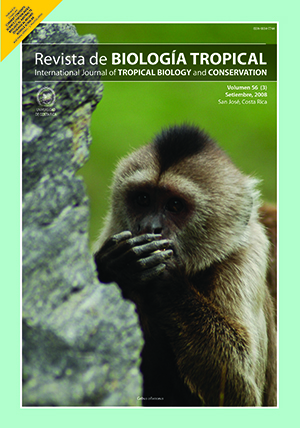Resumen
The North Eastern region of India is undergoing industrial development at a faster rate than expected. Roads form the main system of transportation and communication owing to the hilly topography of the region. Automobiles discharge a number of gaseous and trace metal contaminants. Human activities like stone grinding, road construction and sand milling also increase the atmospheric dust and heavy metal contaminant level. These contaminants get settled on leaf surfaces at roadsides and enter in contact with phylloplane microorganisms. This study compares microorganisms on leaf surfaces of alder (Alnus nepalensis (Betulaceae)) on roadside and non-roadside environments. Two sites dominated by alder were selected. One at a busy road intersection on the National Highway no. 44 in Shillong with high traffic density (8000-9000 heavy vehicles/day), taken as the polluted site and the other one in a forest approximately 500 m away from the roadside considered as the unpolluted site. Analysis of phylloplane microorganisms, lead, zinc, copper, cadmium and sulphur was carried out from leaves. The bacterial population was higher at the unpolluted site. Bacterial population showed a significant negative correlation with lead, zinc, copper, cadmium and sulphur. Similarly, fungal population was higher at the unpolluted site. A total of 29 fungal species were isolated from the phylloplane of A. nepalensis (polluted site 16 species; unpolluted site 28 species). Some fungal forms like Mortierella sp., Fusarium oxysporum and Aureobasidium pollulans were dominant in the polluted site. Numbers of phylloplane fungi and bacteria were significantly reduced in the polluted site. The correlation coefficient indicated a detrimental effect of metals like lead, zinc, copper, cadmium and sulphur on the microbial community of leaf surfaces. The specificity of certain fungi to the unpolluted site may be attributed to their sensitivity to pollution. The predominance of Aureobasidium pollulans, Fusarium oxysporum and Mortierella sp. in the polluted site may be due to their resistance to pollutants in roadside conditions.##plugins.facebook.comentarios##

Esta obra está bajo una licencia internacional Creative Commons Atribución 4.0.
Derechos de autor 2008 Revista de Biología Tropical
Descargas
Los datos de descargas todavía no están disponibles.






